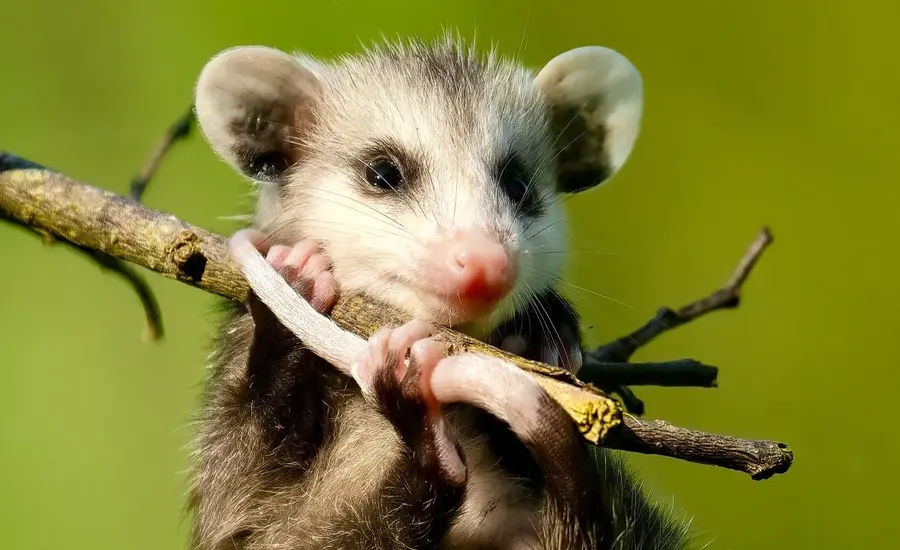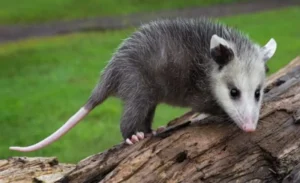Blog
The Amazing World of the Tlacuache: Nature’s Clever Little Survivor

The tlacuache, more commonly known as the opossum in English, is one of nature’s most fascinating and underrated creatures. Found primarily in the Americas, this small marsupial has captured the attention of biologists, ecologists, and wildlife enthusiasts for its unique adaptations, remarkable resilience, and ecological significance. Despite its often misunderstood and overlooked presence, the tlacuache is a true testament to the wonders of evolution and survival. This article delves deeply into the biology, behavior, cultural significance, and ecological role of the tlacuache, showcasing why it deserves admiration and protection.
A Glimpse Into Tlacuache Biology
The tlacuache is a marsupial, which means it belongs to a group of mammals characterized by the presence of a pouch in females for rearing their young. Unlike placental mammals, marsupials like the tlacuache give birth to underdeveloped offspring that complete their development within the safety of the mother’s pouch. This unique reproductive strategy sets them apart from most other mammals and is one of their defining characteristics.
In terms of appearance, the tlacuache is often recognized by its grayish fur, pointed snout, and hairless, prehensile tail. These tails are not just a distinct physical feature but also an essential tool for climbing and maintaining balance in trees. The tlacuache’s hands are another marvel, with opposable thumbs that enable them to grasp branches and navigate their arboreal habitats effectively. Their sharp teeth and omnivorous diet make them highly adaptable feeders, consuming a wide range of foods, including fruits, insects, small animals, and even carrion.
The tlacuache’s most distinctive trait, however, is its ability to “play dead” when threatened—a behavior scientifically known as thanatosis. When a predator confronts a tlacuache, it may collapse, emit a foul odor, and appear lifeless, discouraging the predator from attacking further. This remarkable defense mechanism is involuntary and showcases the tlacuache’s evolutionary ingenuity.
Ecological Role: A Keystone in the Environment
The tlacuache plays a crucial role in its ecosystem, serving as both predator and prey. As an omnivore, it helps control insect populations, disperse seeds, and recycle nutrients through scavenging. This dietary flexibility allows it to thrive in diverse habitats, from forests and grasslands to urban areas where it often encounters human settlements.
Seed dispersal is one of the tlacuache’s most significant ecological contributions. By consuming fruits and defecating the seeds in different locations, these animals promote plant growth and forest regeneration. This role is especially vital in tropical and subtropical ecosystems, where the tlacuache contributes to maintaining biodiversity and ecological balance.
Additionally, tlacuaches help control pest populations by feeding on insects such as cockroaches, beetles, and even ticks. Studies have shown that a single tlacuache can consume thousands of ticks in a season, indirectly reducing the spread of tick-borne diseases. This natural pest control service underscores the tlacuache’s importance in maintaining healthy ecosystems and mitigating the impacts of harmful pests.
Adaptability: Thriving Against All Odds
One of the most impressive aspects of the tlacuache is its ability to adapt to a wide range of environments and challenges. From dense rainforests to suburban backyards, this marsupial has demonstrated a remarkable capacity to survive and even thrive in the face of habitat loss, climate change, and human encroachment.
The tlacuache’s adaptability can be attributed to its generalist diet and flexible behavior. Unlike many species that rely on specific food sources or habitats, the tlacuache can exploit a variety of resources, making it less vulnerable to environmental changes. This adaptability extends to its reproductive strategy as well, with females capable of producing large litters to ensure population stability even under adverse conditions.
In urban areas, tlacuaches have become skilled at navigating human-dominated landscapes, often scavenging for food in garbage bins and utilizing man-made structures for shelter. While this adaptability has sometimes brought them into conflict with humans, it also highlights their resilience and resourcefulness.

Cultural Significance: Tlacuache in Myth and Folklore
The tlacuache holds a special place in the cultural and mythological traditions of many indigenous peoples in the Americas. In Mesoamerican folklore, the tlacuache is often portrayed as a cunning and resourceful trickster, embodying traits such as cleverness, resilience, and adaptability. These stories not only celebrate the animal’s unique characteristics but also reflect its ecological importance and role in the natural world.
One popular legend tells of how the tlacuache brought fire to humans. According to the story, in ancient times, humans lived in darkness and cold until the tlacuache stole fire from the gods. Using its hairless tail, the animal carried a burning ember back to humanity, providing warmth and light. This tale symbolizes the tlacuache’s cleverness and its perceived role as a benefactor to humankind.
In many rural communities, the tlacuache is also associated with agricultural practices and natural pest control. Farmers often appreciate its role in consuming crop-damaging insects and rodents, viewing it as an ally rather than a nuisance. This cultural reverence highlights the deep connection between humans and the natural world, emphasizing the need to preserve and respect wildlife.
Challenges and Conservation
Despite its adaptability and ecological importance, the tlacuache faces several threats, including habitat destruction, road mortality, and persecution by humans. Urbanization and deforestation have significantly reduced the availability of natural habitats, forcing tlacuaches to venture into human settlements where they are often misunderstood or viewed as pests.
Road mortality is another significant challenge, as these nocturnal animals frequently fall victim to vehicle collisions while foraging or migrating. Additionally, misconceptions and fear surrounding the tlacuache have led to unnecessary killings, further endangering local populations.
Conservation efforts are crucial to protecting the tlacuache and ensuring its continued survival. Public education campaigns can play a vital role in dispelling myths and promoting coexistence between humans and wildlife. Encouraging habitat preservation and implementing measures to reduce road mortality, such as wildlife crossings, are also essential steps toward safeguarding this remarkable marsupial.
The Unique Adaptations of the Tlacuache (Bullet Points)
- Prehensile Tail: Used for climbing, balancing, and even carrying nesting materials, the tail is a versatile tool that enhances the tlacuache’s mobility and survival.
- Opposable Thumbs: Found on their hind feet, these enable the tlacuache to grip branches and climb trees with remarkable agility.
- Thanatosis (Playing Dead): An involuntary defense mechanism that deters predators by making the animal appear lifeless and unappetizing.
- Generalist Diet: The ability to consume a wide range of foods, from fruits and insects to small animals and carrion, makes the tlacuache highly adaptable.
- Efficient Immune System: The tlacuache has a natural resistance to many toxins and diseases, including venom from certain snakes, making it an exceptionally hardy species.
The Future of Tlacuache Conservation
As we continue to learn more about the tlacuache and its role in the natural world, it becomes increasingly clear that protecting this species is not just an ecological necessity but also a moral imperative. The tlacuache represents the resilience and ingenuity of nature, serving as a reminder of the delicate balance that sustains life on Earth.
By fostering greater appreciation and understanding of the tlacuache, we can inspire efforts to protect its habitats and promote coexistence with humans. Whether through scientific research, cultural storytelling, or conservation initiatives, the amazing world of the tlacuache offers endless opportunities to celebrate and protect one of nature’s cleverest little survivors.
Conclusion
The tlacuache, often overshadowed by more charismatic wildlife, is a true marvel of nature. Its unique adaptations, ecological significance, and cultural relevance make it a species worth celebrating and protecting. From its ability to play dead to its role as a natural pest controller and seed disperser, the tlacuache exemplifies resilience and ingenuity. Despite facing challenges such as habitat loss, road mortality, and human misconceptions, this remarkable marsupial continues to thrive in diverse environments, reminding us of nature’s ability to adapt and endure. By fostering a deeper understanding of the tlacuache, we can take steps to ensure its survival and appreciate the vital role it plays in the ecosystems we share. Let us not underestimate the value of this clever little survivor, for its existence enriches both nature and our lives.
FAQs:
What is a tlacuache?
The tlacuache, commonly known as the opossum, is a small marsupial found in the Americas. It is known for its unique biological traits, such as its prehensile tail, opposable thumbs, and the ability to play dead when threatened.
Where do tlacuaches live?
Tlacuaches inhabit a wide range of environments, including forests, grasslands, and urban areas. They are highly adaptable and can thrive in both natural and human-altered landscapes.
What do tlacuaches eat?
Tlacuaches are omnivores, meaning they eat a variety of foods, including fruits, insects, small animals, carrion, and even human leftovers in urban settings. This diverse diet helps them adapt to different environments.
How do tlacuaches contribute to the environment?
Tlacuaches play a crucial ecological role by controlling insect populations, dispersing seeds, and scavenging, which helps recycle nutrients. They also consume large numbers of ticks, reducing the spread of tick-borne diseases.
Why do tlacuaches play dead?
Playing dead, or thanatosis, is a defense mechanism that helps tlacuaches avoid predators. When threatened, they collapse, emit a foul odor, and appear lifeless, making predators lose interest.
Are tlacuaches harmful to humans?
Tlacuaches are generally harmless to humans. They are shy and non-aggressive, often fleeing when approached. They can be beneficial by eating pests like insects and rodents.
-

 Blog7 months ago
Blog7 months agoDiscover The World Of Movies With Mkvcinemas.com
-

 Biography7 months ago
Biography7 months agoMadeline Argy: Age, Height, and Family Background Revealed
-

 Tech7 months ago
Tech7 months agoSimpCityForum: One of the Most Interesting Online Communities
-

 Biography7 months ago
Biography7 months agoCelebrityMeet Christina Erika Carandini Lee?: All You Need To Know
-

 Biography7 months ago
Biography7 months agoHow Old Is SZA Daughter? Discover SZA Daughter’s Age, Name, and More
-

 Biography7 months ago
Biography7 months agoMary Marquardt: The Woman Behind Harrison Ford’s Rise
-

 Crypto Currency7 months ago
Crypto Currency7 months ago5starsstocks .com: How It’s Useful and Helpful
-

 Health & Fitness7 months ago
Health & Fitness7 months agoWhat Has Kiolopobgofit in It? Exploring the Enigmatic Concept
-

 Blog7 months ago
Blog7 months agoWhat is FilthyGrid? Exploring the World of FilthyGrid
-

 Biography7 months ago
Biography7 months agoChevy Chase Net Worth, Bio, Age, Height, Wife & Family

